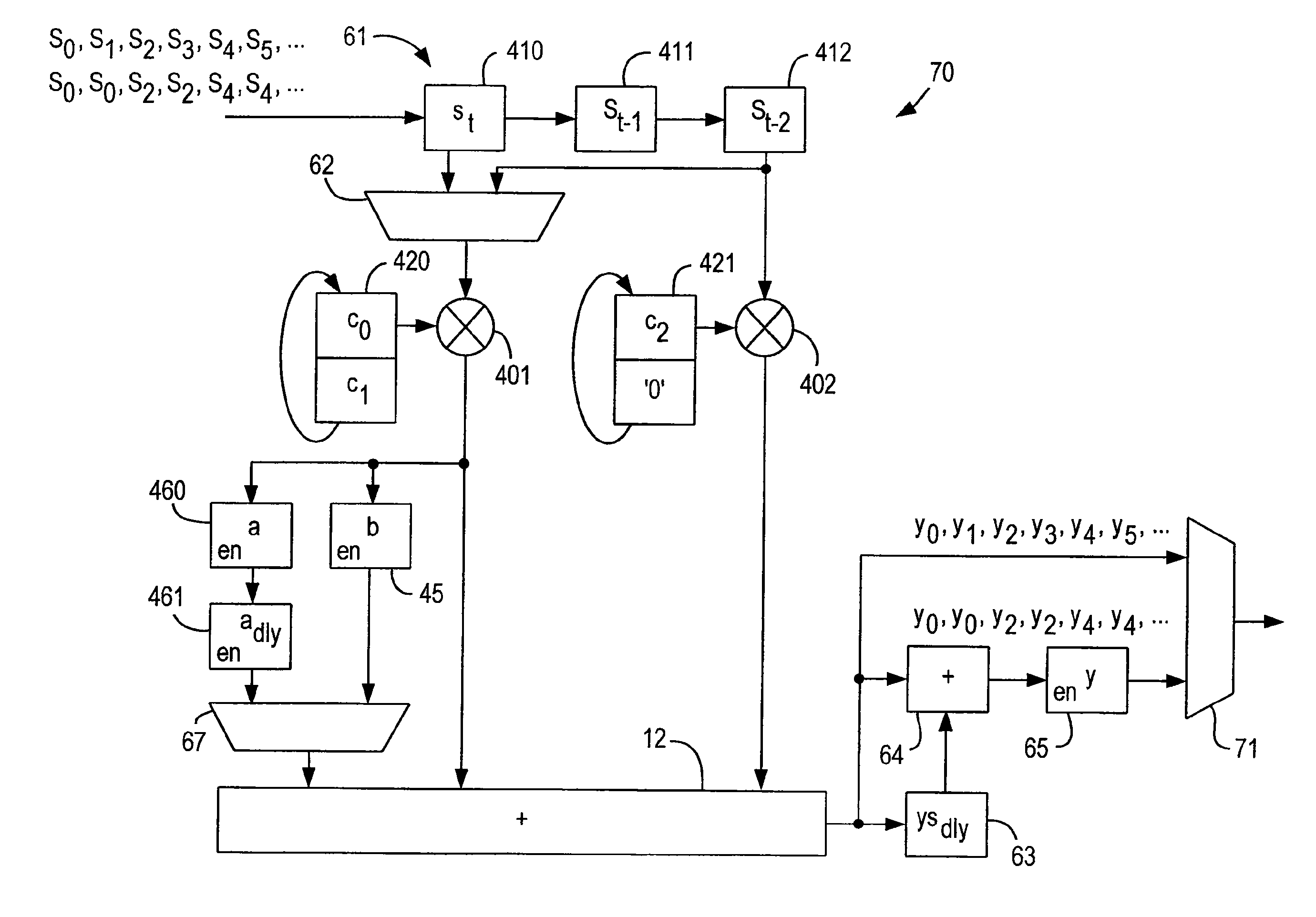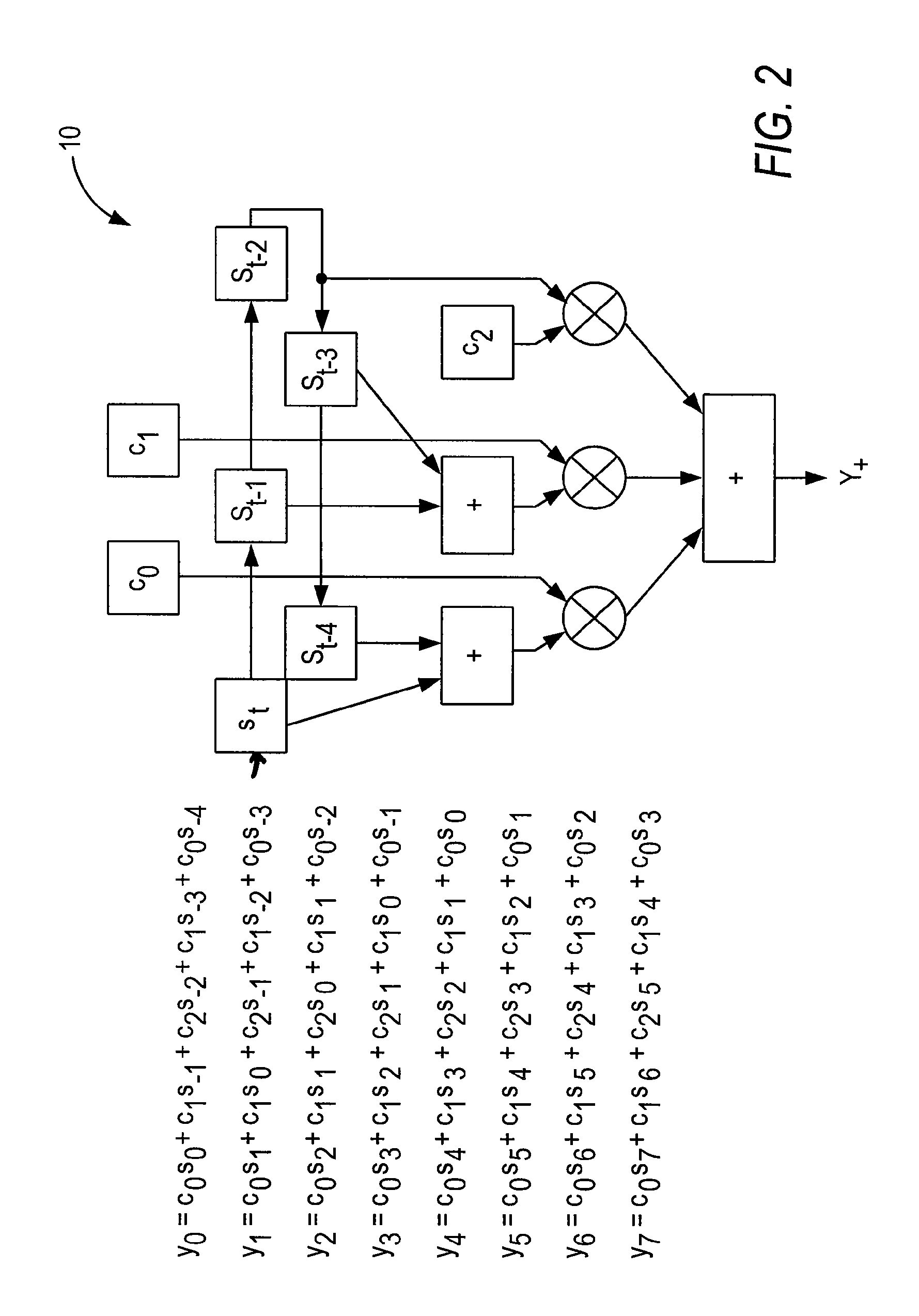Combined interpolation and decimation filter for programmable logic device
a programmable logic device and filter technology, applied in computing, complex mathematical operations, instruments, etc., can solve the problems of difficulty in creating a filter which can be switched between the two modes during run time, half of the filter idle,
- Summary
- Abstract
- Description
- Claims
- Application Information
AI Technical Summary
Benefits of technology
Problems solved by technology
Method used
Image
Examples
Embodiment Construction
[0032]A FIR filter calculates a weighted sum of a finite number of inputs, summing a number of multiplication results, where each multiplication is between a sample and a coefficient. Each such multiplication may be referred to as a “tap.” Mathematically, a FIR filter may be described as:
[0033]Yk=∑i=0Taps-1ci·Sk-i
where Yk is the kth output term, ci is the ith coefficient, sk−i is the (k−i)th sample, and Taps is the number of taps in the filter.
[0034]In the case of interpolation, one inserts zeroes between the input samples before filtering. In the case, for example, of interpolation by two, one can fill all odd-numbered samples with zeroes, which introduces a regular pattern of zeroes into the equations. The same circuitry that is used as an ordinary FIR filter could be used to perform the interpolation filtering, but it would be idle half the time as the inputs would be zero, which would be wasteful. For interpolation by a higher factor n, the circuitry would be idle for (n−1) / n ...
PUM
 Login to View More
Login to View More Abstract
Description
Claims
Application Information
 Login to View More
Login to View More - R&D
- Intellectual Property
- Life Sciences
- Materials
- Tech Scout
- Unparalleled Data Quality
- Higher Quality Content
- 60% Fewer Hallucinations
Browse by: Latest US Patents, China's latest patents, Technical Efficacy Thesaurus, Application Domain, Technology Topic, Popular Technical Reports.
© 2025 PatSnap. All rights reserved.Legal|Privacy policy|Modern Slavery Act Transparency Statement|Sitemap|About US| Contact US: help@patsnap.com



